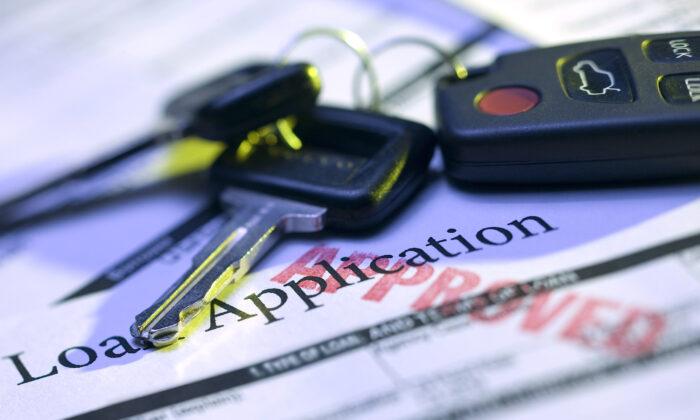The New York Fed reported on July 16 added that fewer people across the country also sought to borrow.
The report was part of the bank’s monthly Survey of Consumer Expectations, which is taken every four months to assess credit access issues in the United States.
The New York Fed reported that the overall rejection rate for credit applicants rose to its highest level since June 2018, standing at 21.8 percent, a jump from 17.3 percent in February.
Researchers noted that the rise in the application rejection rate “was broad-based across age groups and highest among those with credit scores below 680.”
Rejection rates for auto loans came in at 14.2 percent from 9.1 percent in February, the highest on record since 2013, while rising for credit card applications, credit card limit increase requests, mortgages, and mortgage refinance requests, at 21.5 percent, 30.7 percent, 13.2 percent, and 20.8 percent, respectively.The survey noted that the average probability that a loan would be rejected “sharply” increased to record levels for auto loans, credit cards, credit limit increases, and housing-related credit.
However, consumer lending rates have remained relatively stable, despite some signs of slowing down from its peak in October 2022.The Fed survey found that the application rate for credit over the past 12 months modestly declined to 40.3 percent from 40.9 percent in February, its lowest reading since October 2020.
On the other hand, respondents who planned to apply for credit over the next year ticked up to 26.4 percent from 26.1 percent in February.
Application rates for auto loans and credit card limit requests declined to 11.9 percent and 12.5 percent, respectively, while increasing to 24.8 percent for credit cards, 6.5 percent for mortgages, and 5.3 percent for mortgage refinancing.

Recession Indicators
The report has raised additional concerns about a looming recession from analysts.Others, like British financial analyst James Eagle, see mixed signals in the NY Fed report.
Credit Harder to Acquire
The U.S. lending sector has taken a hit following the collapse of three regional banks this spring which has caused the flow of credit to dry up for many businesses.Meanwhile, Federal Reserve policymakers aggressively raised borrowing rates in March 2022 to head off high levels of inflation by softening demand.
This policy has made credit harder to get, and the Fed is widely expected to raise rates again next week at its next policy rate meeting.
The higher interest rates have driven up borrowing costs, causing banks to brace for more defaults, while overall loan loss allowances, outside the pandemic, peaked at their highest level in almost 12 years.
The housing sector has disproportionately taken a major blow due to rising mortgage rates, which surged below 3 percent from the fall of 2020 and most of 2021 to above the 7 percent mark.
Increasing home lending costs have caused Americans to refrain from buying or selling properties.
The New York Fed reported in May that first-quarter mortgage demand continued to tumble as overall household debt levels rose.
Dallas Fed President Lorie Logan also said in early July that a rebound in the housing sector was a potential source of risk for future price pressures.Reuters contributed to this report.





